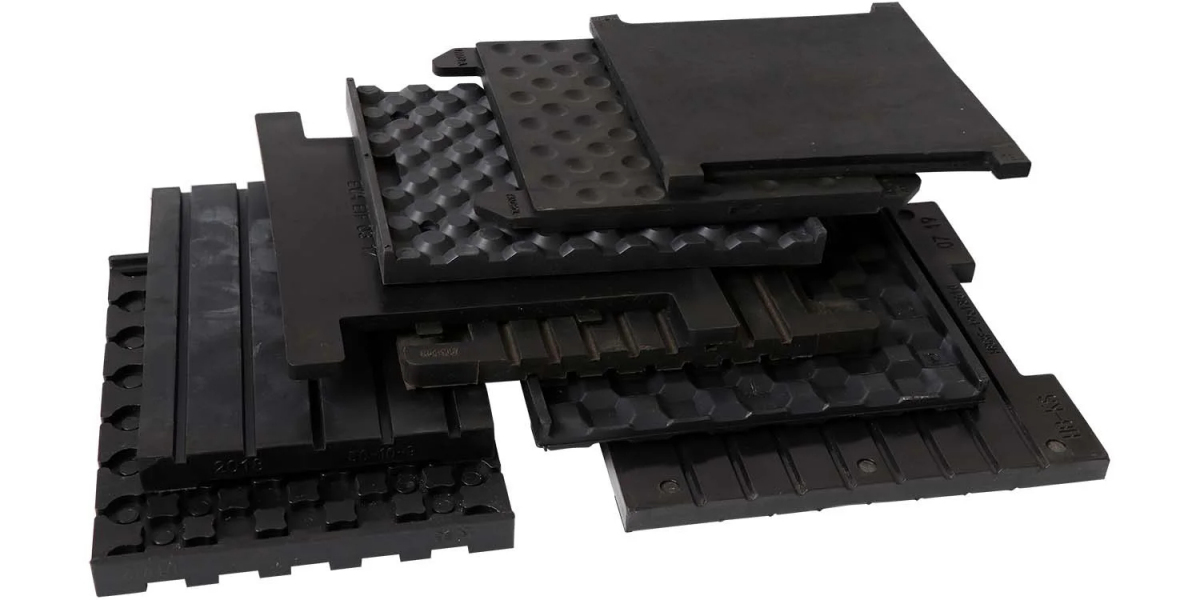In the continuously advancing railway industry, ensuring track safety, stability, and comfort has become a top engineering priority. One key yet often overlooked component that plays a decisive role in modern railway infrastructure is the elastic pad. Designed to absorb vibration, reduce noise, and distribute loads evenly, elastic pads are essential to maintaining the structural integrity and operational efficiency of railway tracks.

As a leading manufacturer and supplier of high-performance rail components, HuiBo Railway is committed to developing elastic pads that meet the demanding technical standards of high-speed railways, urban transit systems, and heavy-haul freight networks. By integrating advanced materials science with precision manufacturing, HuiBo Railway ensures that every elastic pad delivers maximum performance, durability, and safety.
1. What Is an Elastic Pad in Railway Applications
An elastic pad—also known as a rail pad or under-rail pad—is a specialized component placed between the rail and the sleeper (or tie). Its primary function is to reduce dynamic impact forces generated by passing trains, protecting both the rail and the sleeper from excessive wear and fatigue.
In modern railway systems, where trains operate at high speeds and under heavy loads, the elastic pad serves as a key damping and insulation component. It not only minimizes vibration transmission but also enhances the overall stability of the track structure.
2. The Engineering Functions of Elastic Pads
Elastic pads may appear simple, but they serve multiple vital functions in track engineering:
Vibration and Shock Absorption:
By absorbing vertical and lateral forces, elastic pads prevent microcracks and damage in sleepers, reducing maintenance frequency and extending track life.
Load Distribution:
The pad helps distribute loads uniformly along the sleeper surface, preventing localized stress concentrations that could lead to premature material failure.
Noise and Vibration Reduction:
Elastic pads act as a barrier to noise propagation, significantly reducing vibration transmission to the surrounding environment—an essential factor in urban and suburban rail systems.
Electrical Insulation:
For electric railways, elastic pads provide effective insulation between the rail and sleeper, ensuring safe operation and preventing stray currents.
Track Geometry Stability:
By maintaining consistent elasticity and thickness under long-term loading, the pad ensures uniform rail height, critical for smooth train operation.
3. Advanced Materials and Manufacturing Technology
HuiBo Railway invests heavily in research and innovation to develop elastic pads that perform reliably in a wide range of environmental and load conditions.
The pads are typically made from high-quality natural rubber (NR), ethylene propylene diene monomer (EPDM), or thermoplastic elastomers (TPE). These materials are carefully selected and tested for:
Excellent elasticity and compression resistance
Superior temperature tolerance (−40°C to +70°C)
Resistance to oil, ozone, and ultraviolet radiation
Long-term durability under cyclic loading
Using precision compression molding and automated quality inspection, HuiBo Railway ensures that every pad meets international standards such as UIC, AREMA, and GOST.
4. Applications in Modern Rail Systems
Elastic pads are used across various types of railway systems, including:
High-Speed Railways:
Where high dynamic loads demand superior elasticity and fatigue resistance.
Metro and Light Rail Systems:
Where vibration control and noise reduction are critical for passenger comfort and environmental protection.
Heavy-Haul Freight Lines:
Where pads must withstand extreme loads and maintain performance over long service intervals.
Urban Transit Projects:
Elastic pads help reduce noise pollution and minimize the impact on nearby buildings and infrastructure.
5. Performance Testing and Quality Assurance
Each HuiBo Railway elastic pad undergoes rigorous performance testing to ensure reliability under operational stress. Tests typically include:
Static and Dynamic Load Tests
Fatigue and Creep Resistance Tests
Hardness and Compression Set Tests
Environmental Aging Tests (UV, Temperature, and Humidity Exposure)
Electrical Resistance Measurement
HuiBo Railway’s laboratory facilities are equipped to simulate real-world track conditions, ensuring that every pad delivers consistent elasticity and protection over its lifespan.
6. The HuiBo Railway Advantage
With years of expertise in rail fastening systems, HuiBo Railway offers integrated solutions that combine elastic pads, rail clips, fasteners, and insulating components into one cohesive system.
Key advantages of HuiBo Railway elastic pads include:
Customizable hardness and dimensions to suit different rail standards
Proven performance in high-speed and heavy-load environments
Long service life and reduced maintenance cost
Strict compliance with global railway safety and quality standards
Through continuous innovation, HuiBo Railway aims to enhance rail safety, reduce maintenance costs, and promote sustainable rail infrastructure development worldwide.
7. Conclusion
Elastic pads are far more than auxiliary components—they are a core element of track engineering that directly influences ride comfort, safety, and cost-efficiency. As global rail networks expand, the demand for high-performance, durable, and environmentally responsible elastic pads continues to grow.
With its deep technical expertise and commitment to quality, HuiBo Railway stands at the forefront of this transformation, providing innovative solutions that ensure smoother, quieter, and more sustainable rail transportation.
https://www.hbrailwayfastening.com/the-critical-role-of-elastic-pads-in-modern-railway-systems.html














